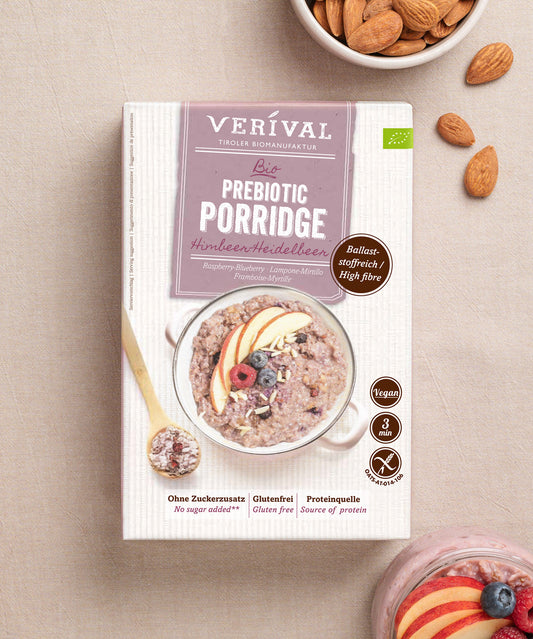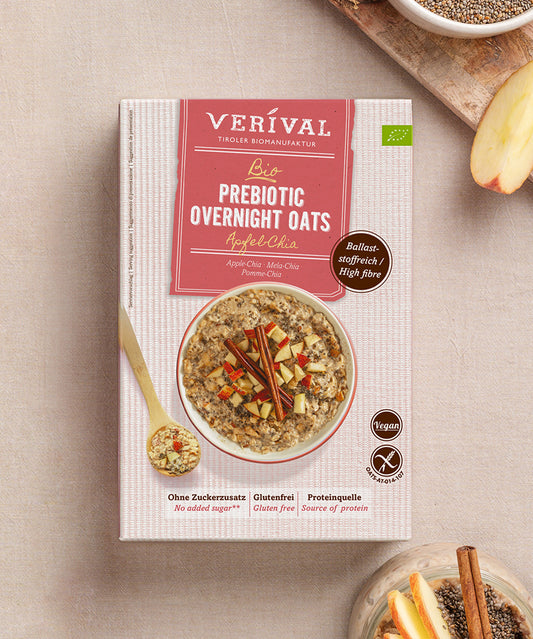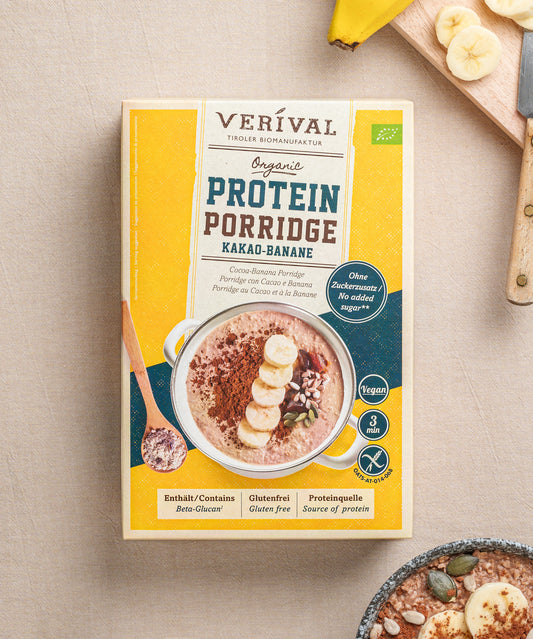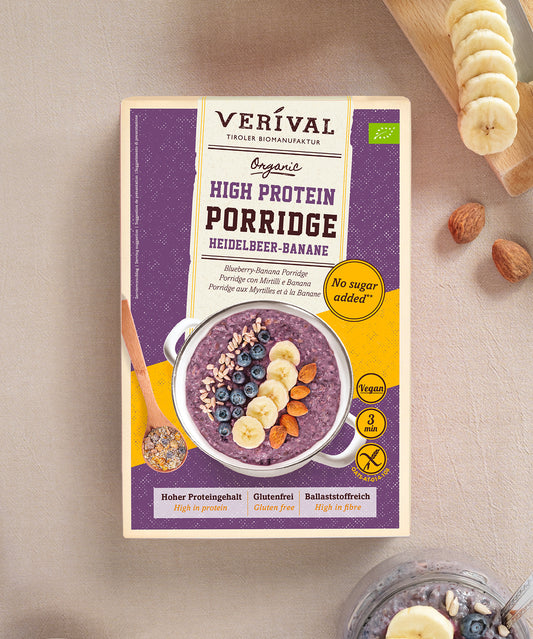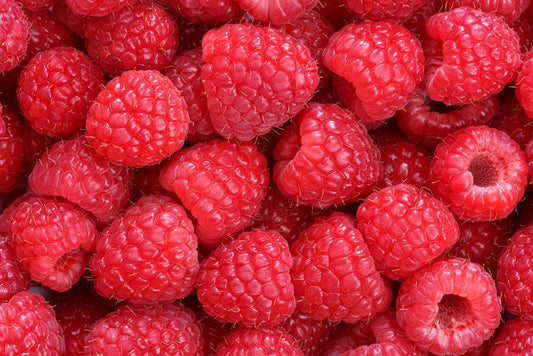Sooner or later, anyone looking to lose weight in a healthy and sustainable way will come across intermittent fasting as a nutritional concept. Unlike traditional diets, it avoids prohibitions and extreme calorie deficits, which is probably one of the reasons why it is so popular.
In this article, we explain what intermittent fasting actually is and how it works. You will also learn how to lose those unwanted pounds and which breakfasts are particularly suitable. Let's get started!
Lose weight with a healthy breakfast
What is intermittent fasting?
Intermittent fasting, also known as interval fasting, is a form of nutrition in which you eat and fast alternately at regular intervals. The concept is becoming more and more popular mainly because it is said to have numerous health benefits.
For example, animal models show that type 1 diabetes is less common in test animals when they are fed according to the method of intermittent fasting compared to a conventional diet. (1)
In addition, the popular diet reduces stress and cancer and is associated with a higher life expectancy. (2)
Now that you have a rough idea of what intermittent fasting is, let's take a closer look at the methods and rules of this form of nutrition. Read in detail what intermittent fasting exactly is.
Lose weight with intermittent fasting – here's how it works
Studies show that intermittent fasting is an effective method of getting rid of those unwanted love handles. Time-based fasting has proven particularly effective for those who are overweight. (3)
You can easily find out whether you are considered overweight by using our BMI calculator. It is calculated based on gender, height and weight. If the result exceeds a value of 24.9, you are considered overweight according to BMI. However, different levels are distinguished here, which is why there is no reason to worry about being slightly overweight.
Now that you know your BMI, you are probably wondering how you can lose weight with intermittent fasting. We have written down the most important tips for you:
Tip 1: Find out which variant is suitable for you
Whether 16:8 or 5:2 is better for you depends on how long you can go without food. Do you find it very easy to go without food for long periods, or do you find it difficult? After a familiarization phase of about 10 days, you will notice whether the chosen variant suits you.
Tip 2: No solid food during a fasting period
To ensure that your body accesses your fat reserves as an energy supplier during the fasting periods, you should completely avoid solid food during your fasting window. Especially with the 16:8 method, only water, unsweetened tea and black coffee are allowed.
If you decide to use a different method, you should consume a maximum of 500 calories if you are a woman and 600 calories if you are a man during a fasting day. It's best to get these calories from light soups or juices.
Tip 3: Eat a healthy and balanced diet
During the eating periods, you can basically eat as normal. However, you should keep an eye on your daily calorie intake to avoid exceeding it. After all, it's only with a calorie deficit that the kilos start to drop. You can easily find out how much you can eat and still lose weight using our calorie calculator.
To avoid nasty food cravings or a drop in energy levels when you're doing intermittent fasting, you should also eat a healthy, balanced diet. A high-protein, high-fiber diet will help you achieve long-term weight loss success. That's why you should definitely include foods like whole grains, legumes, vegetables, and fruits in your diet.
The following section will help you decide on the best breakfast to break your fast and provide your body with the most important nutrients.
The perfect breakfast for losing weight with intermittent fasting
To lose weight with intermittent fasting, you should eat plenty of fiber and protein. This starts with breakfast when you end your fasting period.
Porridge is therefore particularly suitable as the first meal of the day. This warm breakfast porridge contains a whole range of dietary fibres and complex carbohydrates. This is mainly thanks to its main ingredient, oat flakes. The ingredients of this local superfood not only make it a healthy source of nutrients, but also a real filling food. A property that is particularly important during a diet.
To give your breakfast an extra protein boost, choose protein-rich toppings such as nuts, nut butter or seeds. Even better: try our Sport Protein Porridge Cocoa-Banana. The high proportion of plant-based protein and fiber makes it the ideal breakfast for intermittent fasting.
Lose weight with protein muesli & protein porridge
Sources:
- Pedersen CR, Hagemann I, Bock T, Buschard K. Intermittent feeding and fasting reduces diabetes incidence in BB rats. Autoimmunity. 1999;30(4):243-50. doi: 10.3109/08916939908993805. PMID: 10524500.
- Anson, R.M., Jones, B. & de Cabod, R. The diet restriction paradigm: a brief review of the effects of every-other-day feeding. AGE 27, 17–25 (2005). https://doi.org/10.1007/s11357-005-3286-2
- Stephanie Welton, Robert Minty, Teresa O'Driscoll, Hannah Willms, Denise Poirier, Sharen Madden, & Len Kelly. (2020). Intermittent fasting and weight loss. Canadian Family Physician,66 (2), 117.





